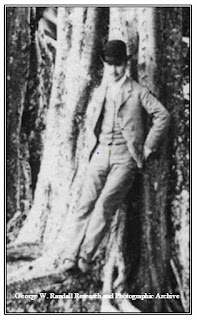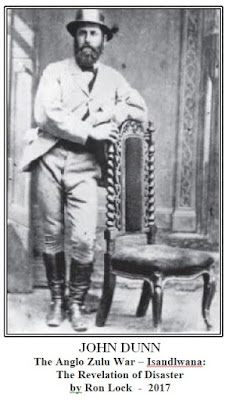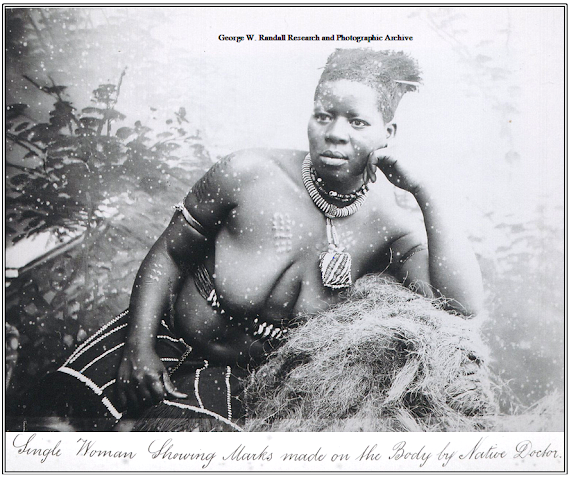GEORGE BULLOUGH WORLD TOUR 1892 - 1895
NATIVES - SOUTH AFRICA, AUSTRALIA &c.
NATIVES - SOUTH AFRICA, AUSTRALIA &c.
Written and illustrated from first hand research by George W. Randall,
co-founder in July 1996 and former
Vice-Chairman Kinloch Castle Friends’ Association.
George Bullough (1870 – 1939, later Sir George,
Baronet) was three days short of his twenty-first birthday when his
father John died on the
25th of February 1891 at the
age of fifty-two.
Nineteen months later, in September
1892, twenty-two year old George embarked on a thirty-five
month long world tour with his friend Robert Mitchell returning to Britain in August
1895 to be soon followed by what was termed a “six-month supplementary
cruise” on his recently purchased ocean-going steam yacht Maria, which he renamed, Rhouma, arriving back at The Rhyddings his Accrington, Lancashire, England home in April 1896.
A twenty volume record containing over six hundred
photographs
of their travels is located in the library at Kinloch
Castle, Isle of Rum, Scotland, Bullough’s Highland hunting lodge
built 1897-1900.
Regrettably each picture has only the briefest
title, sometimes no title and no date.
 |
| Robert Mitchell |
In
1896 Mr. Bullough agreed to have published a series of reports of their
travels written by his travelling companion, Robert Mitchell in The Accrington Division Gazette
<> <> <> <> <> <> <>
I personally transcribed, researched and illustrated all twenty-eight articles
each published in full in my Art Treasures of Kinloch Castle
Blog.
Sadly the articles only relate to half of the countries visited.
However, in order to complete my research I have selected a number of photographs from the remaining albums which cover China, California, New Caledonia, Batavia, Hawaii and Japan - the latter hand-coloured.
Blog 78: Album XIII - Natives, South
Africa, Australia &c.
commences with the amazing early life story of Mr. John
Robert Dunn, 1834 - 1895,
and his reputedly “forty wives of various
colours”
followed by a selection of photographs from the first half of Album XIII.
** + * + * + * + ** + ** + * + * + * + **
Cared
for by native nurses and playing with native children young John quickly
learnt
to speak both English and Zulu fluently. Financially secure
Robert commissioned
an impressive homestead overlooking the Indian Ocean,
aptly called “Sea View”.
Over
time John increasingly embraced the Zulu culture. His personality and
linguistic skills combined with the adaptability of youth enabled him to
naturally combine the inherited values of his roots with those of the land of
his birth.
** + * + * + * + ** + ** + * + * + * + **
George W. Randall Research and Photographic Archive
** + * + * + * + ** + ** + * + * + * + **
** + * + * + * + ** + ** + * + * + * + **
Life for John was idyllic. He loved
accompanying his father on hunting trips and soon became very proficient with a
rifle. In 1847, only thirteen years old, John witnessed a life changing event, his father being
trampled to death by an incensed bull elephant.
Further tragedy struck two years later when
an outbreak of the highly infectious viral cattle disease rinderpest
wiped out ninety per cent of herds bringing financial ruin in its wake. In
order to stave off disaster Anne Dunn was forced to sell “Sea View” and with
her daughters return to Port Elizabeth, where in 1851 she died. John was
seventeen years old, alone and penniless.
For the next few months John worked as a
transport rider until his dishonest employer cheated him out of his wages due
to “lack of contract”. Totally discouraged, abandoning so called civilised society;
John withdrew into the bush - the haunts of big game in Africa - taking with
him Catherine Pierce, the fifteen year old daughter of his father’s former
assistant and a Cape-Malay woman. They led a nomadic existence along the Natal/Zululand
border and in 1853 John and Catherine married.
Norwegian Missionaries in Natal and Zululand 1844-1900 edited by Frederick Hale
Washing of the Spears by Donald R. Morris
Zulu Victory by Ron Lock
Rise and Fall of the Zulu Nation by John Laband
The Anglo Zulu War - Isandlwana: The Revelation of Disaster by Ron Lock
As a young frontiersman, skilled with a
rifle and fluent in the native language, John very soon came to the attention
of retired army captain Joshua Walmsley, the British Border Agent, and son of
the mayor of Liverpool. Walmsley took the “coarse and uncultured” nineteen year
old under his wing and, with his support, finished his education at the end of
which John was appointed Walmsley’s assistant.
With a unit of native policemen
John’s task was to monitor all traffic crossing the largest river in KwaZulu-Natal, the 310 mile long Tugela River from Zululand as it flows from the Drakensberg Mountains to the Indian Ocean.
Described by a
contemporary, John Dunn was a “handsome, well-built man, about five feet eight
inches tall with a good forehead, regular features and keen grey eyes. A
closely-cut iron-grey beard hides the lower half of his bronzed weather- tanned
countenance, the look of shrewdness and determination discernible in
every lineament.
Wearing a tweed
suit and wideawake hat he was more
neatly dress
than the average colonist.
His manner being
quiet and unassuming
with no trace
of self-glorification.”
** + * + * + * + ** + ** + * + * + **
* Refer to: British Battles.com - Battle of Isandlwana of self-glorification.”
** + * + * + * + ** + ** + * + * + **
Meanwhile tension was mounting in Natal. Zulu king, Shaka, founder of the Zulu
nation and its most influential monarch who had ruled for twelve years, had
been assassinated in September 1828 to be succeeded by his half-brother Dingane
who ruled until he was murdered in 1840, to be succeeded by his forty-two year
old half-brother Mpande who ruled until he died naturally in 1872. Despite his
lengthy reign it was King Mpande's son, Cetshwayo who was de
facto monarch from 1856 ultimately succeeding in October
1872.
In August 1879 following many clashes,
culminating in the Battle of Isandlwana* on the 22nd January
1879 in which Zulu warriors overran Her Majesty’s 1st Battalion,
24th of Foot sending an icy shiver through Victorian society.
Their complacency shattered, the British sent a far larger force to defeat
the Zulu, which they did at the Battle of Ulundi on the 4th of
July 1879, the last major battle of the Anglo/Zulu War. King Cetshwayo KaMpande
was deposed and exiled, first to Cape Town and then to London, where he
presented his case in the presence of British
officials before Queen Victoria. His pleas went unanswered.
In order to prevent any organised
resurgence of Zulu power, Sir Garnet Wolseley, British High Commissioner
for South Eastern Africa, divided Zululand into thirteen autonomous
chiefdoms, by far the largest, which bordered Natal, was awarded to John Robert
Dunn.
Finally, after agreeing to keep the
peace King Cetshwayo was allowed to return to his country in January 1883. He
died at the village of Eshowe on the 8th of February 1884.
Norwegian Missionaries in Natal and Zululand 1844-1900 edited by Frederick Hale
Washing of the Spears by Donald R. Morris
Zulu Victory by Ron Lock
Rise and Fall of the Zulu Nation by John Laband
The Anglo Zulu War - Isandlwana: The Revelation of Disaster by Ron Lock
ALBUM XIII *
IMAGE 12 * FULL SIZE 8 x 6 INCHES
Witchcraft. Reading by the Shape of Bones on the
ground
Where Anything is to be found When the Article has
Been Lost.
DETAIL - Witchcraft. Reading by the Shape of Bones on the ground
Where Anything is to be found When the Article has Been Lost.
CIRCUMCISION DANCE
Album XIII * Image 19 * Edited from full size 8 x 6 inches.
Album XIII * Image 19 * Edited from full size 8 x 6 inches.
BUSHWOMEN & CHILDREN SOUTH AFRICA
ALBUM XIII * WOODCUT SIZE 3 x 1¾ INCHES
ALBUM XIII * WOODCUT SIZE 3 x 1¾ INCHES
>< + >< + ><
THIS PAPER WAS ORIGINALLY POSTED 25 JANUARY 2019.
REVIEWED WITH ADDITIONS 30 MARCH 2025.
ART TREASURES OF KINLOCH CASTLE
the Blog of George W. Randall.
Copyright George W. Randall Archive.
*** ++ *** ++ *** ++ *** ++*** ++ *** ++ ***





















































No comments:
Post a Comment